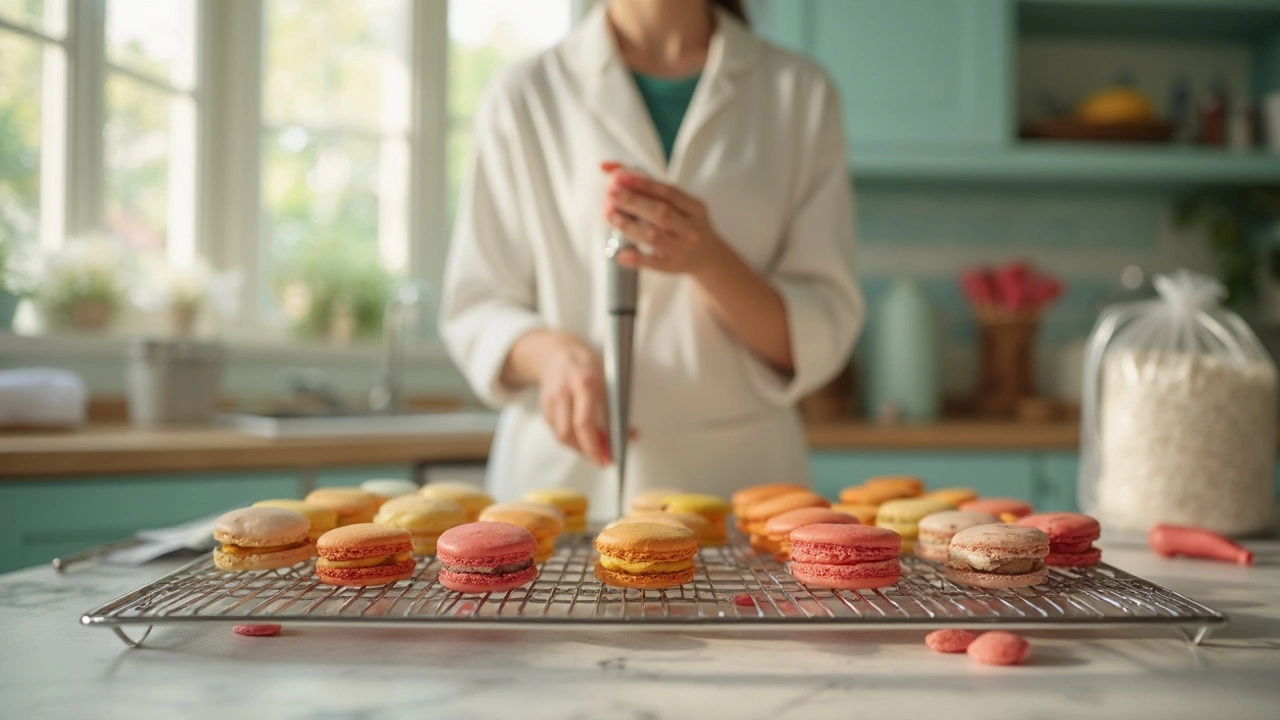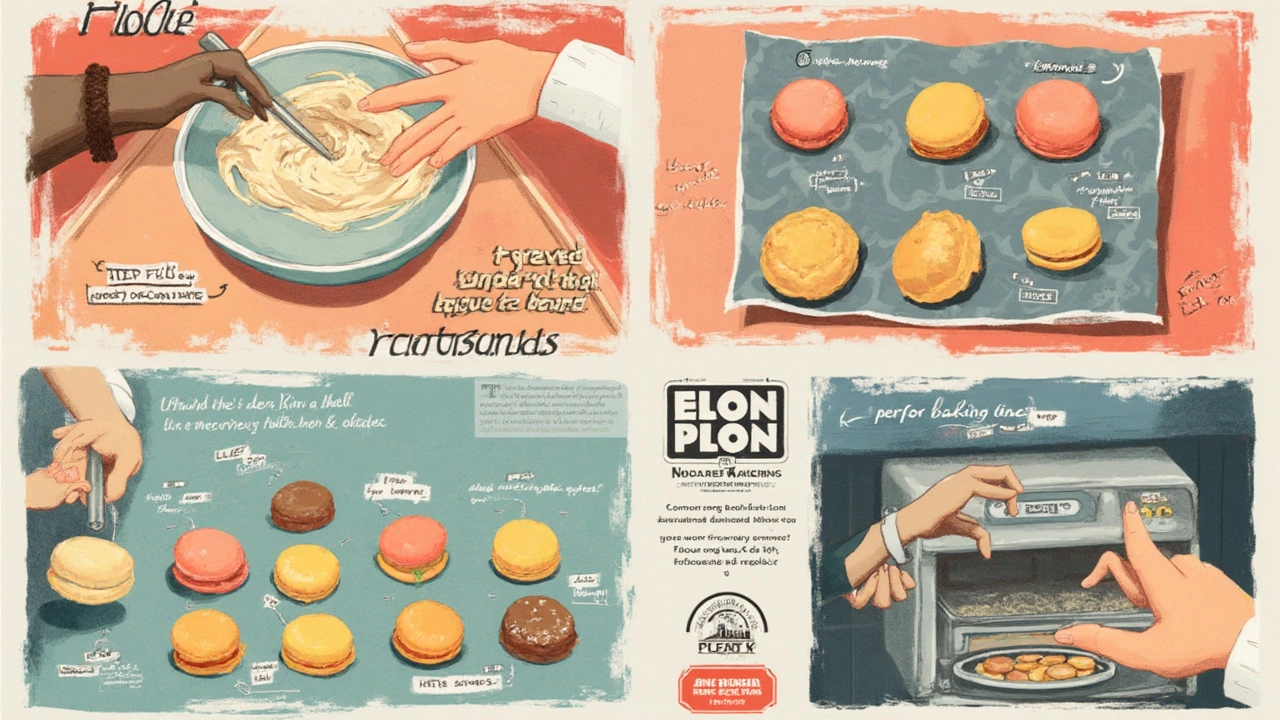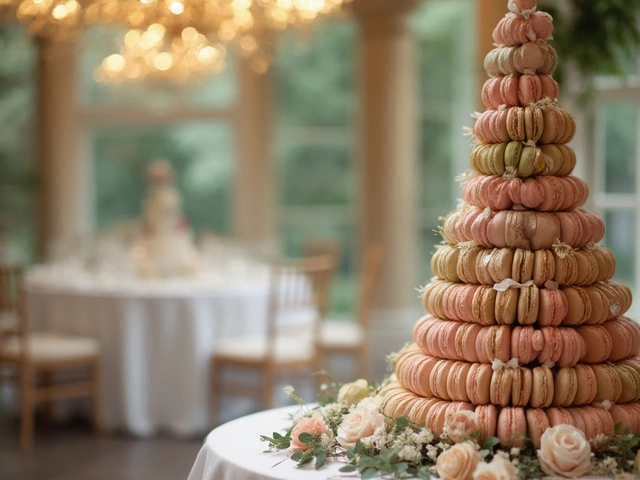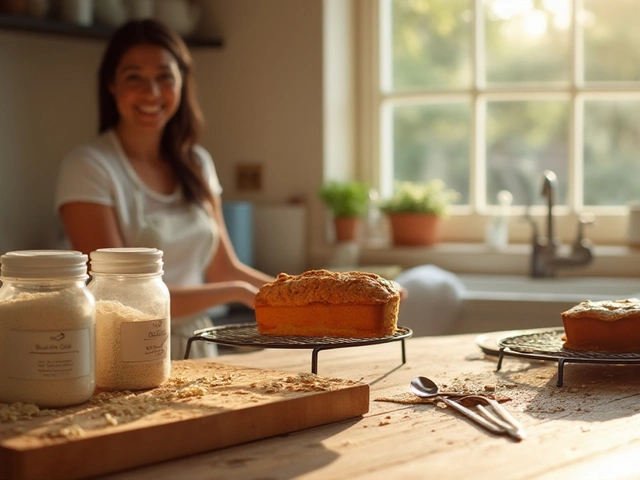
So, you pull a tray of freshly baked macarons out of the oven, wait for them to cool, crack one open—and bam, empty space. Hollow macarons are just one of those infuriating mysteries that seem like pure bad luck. But there’s always a reason behind those gaps.
Most people blame the oven or their equipment, but honestly, the trouble often starts way before baking. The way you mix the batter matters way more than you think. Overmix and you’ll end up with weak shells. Undermix and you’re looking at dense, lumpy discs. It's all about finding that sweet spot where the batter flows like thick lava—seriously, that's the gold standard every baker shoots for.
Before you check your oven thermometer or swap your baking mats, stop and look at what you’re doing during mixing. Sometimes, just a slight tweak in how many turns of the spatula you make can make all the difference. Next, let’s see why getting this part right matters so much for that perfect, solid macaron bite every time.
- What Really Makes a Macaron Hollow?
- Mixing: The Silent Saboteur
- Baking: More Than Just a Timer Game
- Easy Fixes and Tested Tricks
What Really Makes a Macaron Hollow?
Let’s get real—hollow macarons aren’t just annoying, they’re a big clue that something went sideways during the process. When you crack open that shell and find more air than almond goodness, it's almost always a sign that air got trapped or the structure inside didn’t set right.
The number one reason your macarons turn hollow? It’s all about tiny air pockets. When you overwhip your meringue or roughly handle your batter, you end up trapping more air than you want. Later, these bubbles expand and leave you with that dreaded gap under the shell. Think of it as blowing up a balloon that loses its shape after you let out the air—it collapses, leaving empty space.
Here’s a breakdown of the main culprits behind hollow macarons:
- Overmixed or undermixed batter: Too much mixing weakens the structure, while not enough mixing means the ingredients don’t come together. Either way, your shell won’t hold up.
- Meringue not whipped correctly: If you whip past stiff peaks and go dry, the meringue can’t support the shell. Not reaching stiff peaks? The shells collapse and air takes over inside.
- Oven temperature is off: If your oven runs too hot or cool, the outsides harden too quickly or not enough, messing up how the insides cook and set.
- Resting time issues: Not letting your piped shells rest (or letting them rest too long) can wreck the way the shell dries and bakes, trapping weird amounts of moisture or air.
A real shocker? Even pros with years of macaron experience sometimes get hollows, especially on humid days or when using a new oven. It isn’t always about skill—it’s often tiny shifts in your method or environment.
Take a look at what usually sneaks up on bakers during the process:
| Factor | How It Causes Hollows |
|---|---|
| Over-mixing batter | Makes structure too weak, creates big air bubbles |
| Meringue under or over-beaten | Doesn’t provide enough support inside shell |
| Incorrect oven temp | Bakes shell unevenly and leaves undercooked center |
So if you’re getting hollow macarons, don’t just blame your oven. Check your batter, how you whip your meringue, and the patience you have while waiting for shells to dry. Next, let’s zero in on mixing—the sneaky step where lots of bakers trip up without even noticing.
Mixing: The Silent Saboteur
If you’re struggling with hollow macarons, your mixing technique is the first thing you should blame. It’s wild how something so simple can wreck a batch. Macaron batter needs to be mixed just right to avoid air pockets that lead to hollow shells. There’s actually a name for the process—macaronage. The goal is to mix the almond flour, powdered sugar, and meringue together until the batter is glossy and flows slowly off your spatula like thick ribbons.
Here’s what can go wrong:
- Overmixing: If you keep stirring after you hit that ribbon stage, you break down the meringue’s structure. This means the shells can puff up in the oven, then totally collapse inside—leaving you with hollow, fragile cookies.
- Undermixing: If you stop too soon, the batter is too stiff and won’t spread right. You might get cracked shells or bulky, uneven macarons—which, believe it or not, can also lead to hollow centers because the inside dries out before it sets.
Not sure if you nailed it? Try the bowl test: Scoop up some batter and let it drop back in. It should fall in a smooth, steady ribbon and disappear into the rest in about 10 seconds. If it just plops or sits, keep going (gently). If it runs like soup, you’ve gone too far.
Check out these real mixing times. These are from a small poll of home bakers who tracked their macaron results:
| Mixing Minutes | Macaron Texture Result |
|---|---|
| 1-2 min | Too stiff, dry, sometimes hollow |
| 3-4 min | Solid shells, almost perfect |
| 5+ min | Overmixed, hollow centers common |
You’ll need to adjust for your own kitchen, because bigger batches, humidity, and the strength of your meringue all play a part. But if there’s one step you should never rush, it’s mixing. Take it slow, check the batter, then stop the second you see it’s right. Your macarons (and your mood) will thank you for it.

Baking: More Than Just a Timer Game
You could nail the perfect batter, but if you mess up the baking part, your macarons can still end up hollow. The oven isn’t just a glorified timer. Heat levels, rack placement, and even air circulation all play a big role in the final look of your macaron shells.
Let’s talk temperature. Most successful batches roast at 140–150°C (285–300°F) in a regular home oven. Go hotter and your macarons puff up too fast, forming a strong cap that traps steam underneath. That steam escapes and leaves a hollow shell. Too cool, and the batter might not rise enough.
Where you set your tray matters, too. Stick to the middle rack for even heat. The top rack often browns the shell too much, while the bottom rack may not bake them through. If your macaron shells peel off too easily or are too wet underneath, your bake time may need a tweak.
Ovens are notorious for lying about their actual temps. If your macarons aren’t working, grab an oven thermometer and check—some ovens run 10–20°C off without showing it.
- If the shells look hollow and the tops lift off easily, odds are the oven was too hot or the baking time too short.
- If the centers are wet or undercooked, let them bake a couple more minutes—sometimes just 1–2 minutes longer fixes everything.
Here’s a quick cheat sheet for baking times and temps:
| Baking Temp | Baking Time | Result |
|---|---|---|
| 140°C (285°F) | 16–18 min | Even, full shells |
| 150°C (300°F) | 13–15 min | Crisp shells, but watch for browning |
| 160°C (320°F) | 10–12 min | Risk of hollows and browning |
The right combo of temp and time is the secret weapon. So, don’t treat your oven like it’s just background noise—getting this part right finally takes the guesswork out of hollow macarons.
Easy Fixes and Tested Tricks
If your macarons come out hollow, you don’t have to start from scratch. Small tweaks can make a big difference. Let's break down what actually works, based on what pro bakers and home bakers agree on.
- Spot-check your meringue: Before even thinking about mixing, your egg whites need the right texture. Stiff, glossy peaks are your goal. If the peaks flop over or look grainy, keep beating.
- Check your folding technique: When mixing your almond flour and sugar into the meringue, go for slow, steady folds. Many recommend 40 to 60 gentle folds, but start checking for that lava flow texture after 40. Test the batter: it should drop in thick ribbons and smooth out in about 10 seconds.
- Give your macarons a rest: Let piped shells sit until they form a dry skin—usually 20-40 minutes depending on your kitchen's humidity. If you’re in a steamy spot, try running a fan lightly over the trays.
- Watch the oven temp: A lot of hollow macaron shells just need a slight drop in temperature. Try baking at 285°F (140°C) rather than 300°F (150°C). Too high, and they puff up fast and collapse inside. Use an oven thermometer; built-in ones are often off by as much as 20°F.
Here’s a quick cheat sheet with tested numbers and advice:
| Step | Common Mistake | Fix |
|---|---|---|
| Meringue | Soft peaks | Beat until stiff, glossy peaks |
| Folding | Over/Undermixing | Aim for flowing "lava" batter |
| Resting | Under-resting | Let shells dry, no sticky spots |
| Baking | Too Hot Oven | Bake at 285°F/140°C, use thermometer |
One more pro tip: try tapping your trays firmly on the counter after piping—this knocks out extra air bubbles that love to cause hollow macarons.
Even if you nail everything, remember that practice does most of the heavy lifting here. Don’t get stuck on a bad batch. Adjust one thing at a time and you’ll see improvements with your macaron game.












Write a comment